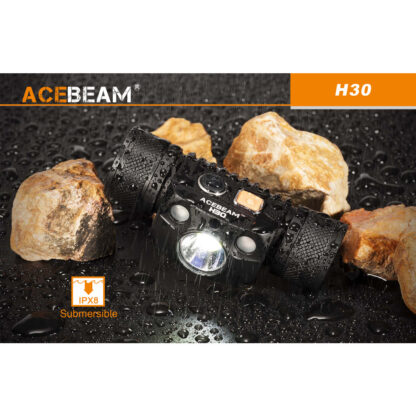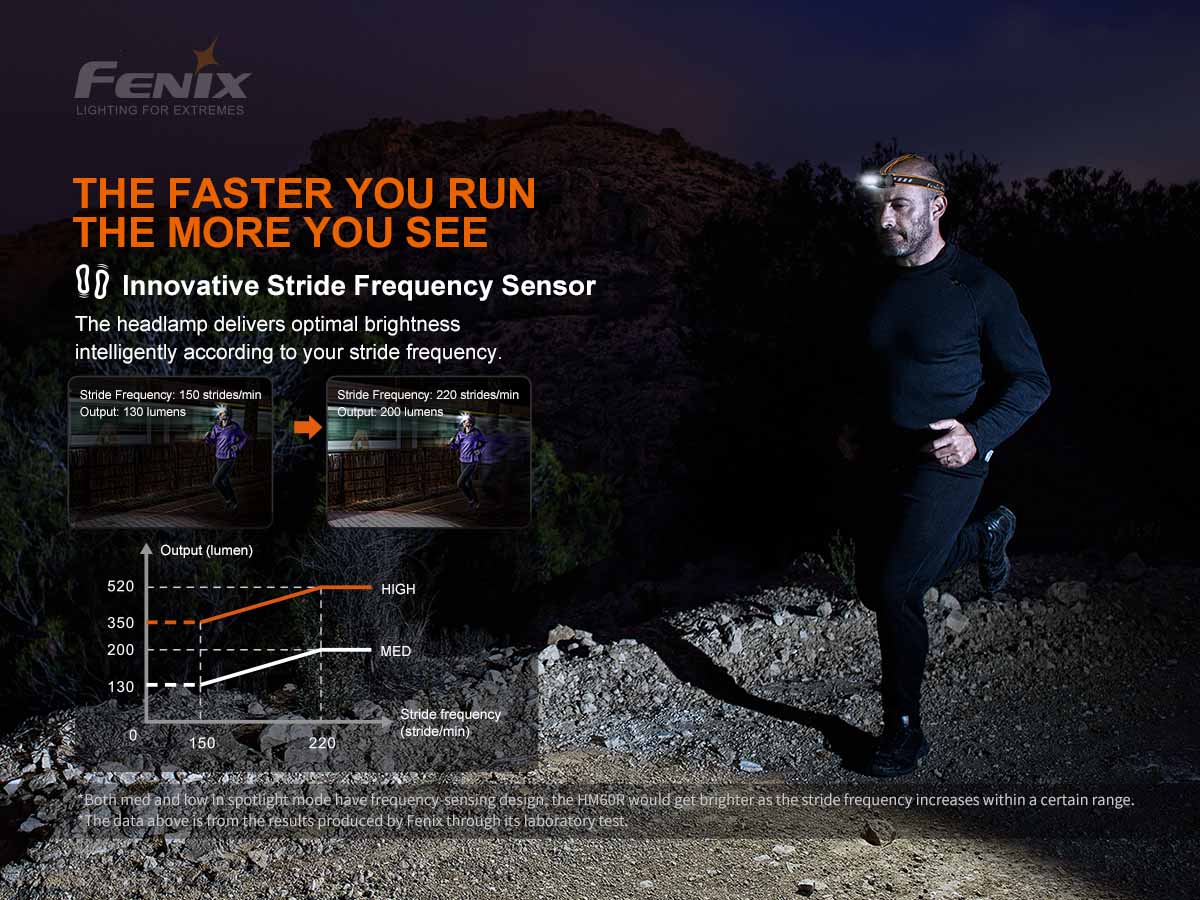
Introduction:
Running at Night? Here’s Why You Need a Headlamp
Running is a fantastic way to stay in shape and enjoy the great outdoors. However, if you prefer to run at night, it can be dangerous without the proper gear. That’s where a headlamp comes in – not only does it help you see where you’re going, but it also ensures that others can see you.
But with so many headlamps on the market, how do you choose the best one for your needs? In this article, we’ll cover everything from brightness and beam distance to battery life and comfort. We want to make sure that you have all the information necessary to make an informed decision when selecting a headlamp for your nighttime runs.
So whether you’re looking to beat the heat or enjoy the peacefulness of a dark evening, read on to discover why a headlamp is an essential piece of equipment for anyone who loves running at night. Let’s find the perfect headlamp to light your path during your nighttime adventures!
Brightness:
As a runner, you know that the right gear can make all the difference. When it comes to running at night, a headlamp is essential for safety and visibility. But how do you choose the right brightness level? Let’s shed some light on this topic.
The brightness of a headlamp is measured in lumens. The higher the number of lumens, the brighter the light will be. Generally, a headlamp with 200 to 300 lumens is sufficient for most runners. However, if you frequently run on darker trails or in areas with little lighting, you may want to consider a headlamp with a higher brightness level.
Beam distance is another important factor to consider when choosing a headlamp. This refers to how far the light will reach. A headlamp with a longer beam distance will provide more visibility in front of you, making it easier to navigate your path. Look for a headlamp with at least 50 meters of beam distance.
Different light modes can also add versatility and convenience to your headlamp. Some models have different brightness settings and modes such as strobe or flashing mode that can be helpful in emergency situations. Additionally, having a red light mode can help preserve your night vision and reduce glare.
When shopping for a headlamp, keep these factors in mind: brightness levels, beam distance, and light modes. With the right combination of features, you’ll have enough light for your nighttime runs while ensuring safety and convenience. So go ahead and shine bright like the star runner that you are!
Beam Distance and Pattern:
When running at night, having a reliable headlamp is crucial for safety and visibility. In addition to brightness, beam distance and pattern are important factors to consider when choosing a headlamp.
Beam distance refers to how far the light can reach. For runners, it’s essential to have a headlamp with an appropriate beam distance for their needs. A longer beam distance is ideal for trail running or areas with little lighting, while a shorter beam distance may be sufficient for well-lit urban areas.
Beam pattern is also an important consideration. Headlamps come in different patterns such as narrow-focused beams or wider-dispersed beams. A narrow beam works best on technical terrain where you need to see far ahead, while a wider beam is better suited for flat terrain where you need to see more of the area around you.
The angle of the beam is another factor worth considering. Some headlamps have fixed beams, while others have adjustable angles. An adjustable angle allows you to point the light where you need it, which can be particularly useful when running on uneven terrain or adjusting the light for different conditions.
When selecting a headlamp for nighttime runs, keep in mind your specific needs and the type of terrain you’ll be running on. Look for a headlamp with an appropriate beam distance and pattern that suits your style of running. An adjustable angle may also prove helpful in certain situations.
With these factors in mind, you’ll be able to choose the perfect headlamp for your nighttime runs and stay safe and visible no matter what kind of terrain you’re tackling!
Battery Life:
When it comes to running at night, having a reliable headlamp with long-lasting battery life is essential. You don’t want to be left in the dark halfway through your run! There are a few things to keep in mind when considering battery life.
Firstly, there are two types of batteries commonly used in headlamps: disposable and rechargeable. Disposable batteries are easy to replace but can be costly over time and contribute to waste. Rechargeable batteries are more environmentally friendly and cost-effective in the long run, but require more attention to keep them charged. So, choose wisely!
Secondly, the brightness setting you choose affects battery life significantly. A higher brightness setting will drain the battery faster than a lower one. Some headlamps even have a “burst mode” or “turbo mode” that provides a temporary boost of brightness but can quickly reduce battery life.
Thirdly, consider how much battery life you need for your runs. Most runners find 3-5 hours of battery life sufficient for their needs. But if you plan on running longer distances or extended periods of time, look for headlamps with even longer battery life.
Lastly, make sure replacing or recharging batteries is straightforward and convenient. Look for models with easily accessible battery compartments or USB rechargeable options for ease of use.
In conclusion, when selecting a headlamp for nighttime runs, choose one with reliable and long-lasting battery life that suits your needs. Keep these tips in mind, and you’ll never be caught out in the dark again!
Comfort and Fit:
When you’re running at night, the last thing you want is a headlamp that’s uncomfortable or ill-fitting. That’s why it’s crucial to prioritise comfort and fit when choosing a headlamp.
Firstly, consider the weight of the headlamp. A lighter headlamp will be much more comfortable to wear for extended periods of time. Some headlamps come with a weight distribution system that helps evenly distribute the weight, reducing discomfort and strain.
Next up, take a closer look at the headband material and adjustability. An overly tight or loose headband can cause headaches or discomfort during your run. For maximum comfort, opt for an adjustable headband made of soft, breathable materials like nylon or mesh. You might also consider a padded or cushioned headband for added comfort.
Another important factor to keep in mind is adjustability – make sure your chosen headlamp can be tilted up or down as needed to direct light where you need it most without causing any neck strain.
It’s also worth considering the size and shape of the headlamp itself. Runners have different preferences – some prefer smaller, compact models that sit snugly against their forehead while others prefer larger ones that sit further away from their face. Find what works best for your personal preferences and needs.
Finally, ensure your chosen headlamp has a secure attachment system so it stays in place throughout your run. Some models use elastic bands while others feature clips or buckles – choose one that is easy to use and keeps your lamp firmly attached.
In short, by prioritising comfort and fit when selecting a running headlamp, you’ll enjoy distraction-free runs at night without any discomfort or headaches.
Durability and Water Resistance:
When it comes to running at night, you need a headlamp that can withstand the elements and last for the long haul. That’s why durability and water resistance are crucial factors to consider when choosing a headlamp.
Firstly, take a closer look at the build quality of the headlamp. Is it made of high-quality materials that can handle wear and tear over time? Opt for headlamps made from sturdy materials like aluminium, titanium, or tough plastics. These materials are lightweight yet durable, making them ideal for runners who want a device that will last.
Next up is water resistance. Running in wet weather requires a headlamp that can handle exposure to moisture without breaking down. Look for headlamps with an IPX rating – this standardised system rates devices on their resistance to water and dust. Headlamps with higher IPX ratings are more resistant to water and can withstand rain or sweat.
Most headlamps have an IPX4 rating which means they’re water-resistant but only able to handle splashes from any direction. If you plan on running in heavy rain or snow, consider purchasing a higher-rated device such as IPX7 or IPX8 models which can withstand immersion in water for longer periods of time.
Another important consideration is design – look for headlamps with a comfortable fit so they don’t bounce around during your run. Adjustable straps or bands help ensure a secure fit while lightweight and compact designs reduce the risk of damage during use.
Finally, taking care of your headlamp ensures it lasts longer. Keep it clean and dry after each use, store it in a cool dry place away from direct sunlight and extreme temperatures.
In summary, when selecting your running headlamp prioritise durability with high-quality materials, choose one with good water resistance capabilities through its IPX rating, find one with adjustable straps or bands for comfort and make sure to take good care of it so you can enjoy many safe runs at night!
Additional Features:
Aside from the essential features mentioned earlier, there are additional features that can take your night runs to the next level. Here are some of our favourites:
Red Light Mode
Some headlamps come with a red light mode, which is perfect for preserving your night vision or avoiding disturbing others around you. The red light also helps you see better in foggy or misty conditions.
Zoom Feature
A zoom feature lets you adjust the focus of the beam, allowing you to either narrow or widen it as needed. This feature is especially useful when you need to focus on a specific area, like spotting a trail marker or navigating through rough terrain.
Rechargeable Batteries
If you’re an avid runner and use your headlamp frequently, it’s worth investing in one with rechargeable batteries. Not only is it more cost-effective in the long run, but it’s also better for the environment since you’re not constantly disposing of disposable batteries.
Tilt Function
A headlamp with a tilt function lets you adjust the angle of the beam, making it easier to see where you’re going without having to tilt your head constantly. This feature is particularly useful when running on uneven terrain or uphill.
Multiple Light Modes
Some headlamps offer multiple light modes, such as high, medium, low, and strobe. This feature lets you adjust the brightness of the beam to suit different conditions or activities – whether you’re running on a well-lit road or tackling a pitch-dark trail.
Weight
The weight of your headlamp can make a significant difference in your comfort level during long runs. Look for one that’s lightweight and evenly balanced so that it doesn’t cause any discomfort or strain on your head or neck.
Bluetooth Connectivity
Some headlamps come with Bluetooth connectivity capabilities – allowing you to sync them with your smartphone or other devices. This feature lets you control brightness remotely or even track your running stats using a running app.
Choose What’s Right for You
When choosing a headlamp, consider which of these additional features are important to your running needs. While some features may be essential, others may not be necessary for your specific situation. Remember: find a comfortable and reliable headlamp suited to your running style and environment.
Choosing the best headlamp for running at night can make all the difference in terms of safety and enjoyment during those dark runs. By considering these additional features along with essential ones mentioned earlier, we hope this guide has helped equip you with everything needed to make an informed decision about what fits best for YOU!
Conclusion:
Running at night can be a thrilling experience, but it can also be dangerous if you’re not properly equipped. That’s where a good headlamp comes in! Choosing the right one may seem overwhelming, but fear not – with a little bit of information, you’ll be able to find the perfect fit for your needs.
When shopping for a headlamp, consider factors like brightness, beam distance and pattern, battery life, comfort and fit, durability and water resistance, and additional features. Keep in mind that the brightest or longest-distance headlamp isn’t always the best choice – it’s all about finding the right balance of features that suit your unique needs and preferences.
Whether you’re an experienced runner or just starting out on your nighttime adventures, having the right headlamp can make all the difference in terms of safety and visibility. Don’t rush into any decisions – take some time to research and find the perfect one for you. With the right headlamp by your side (or rather, on top of your head), you can enjoy your runs with peace of mind knowing you have everything you need to stay safe and visible.




